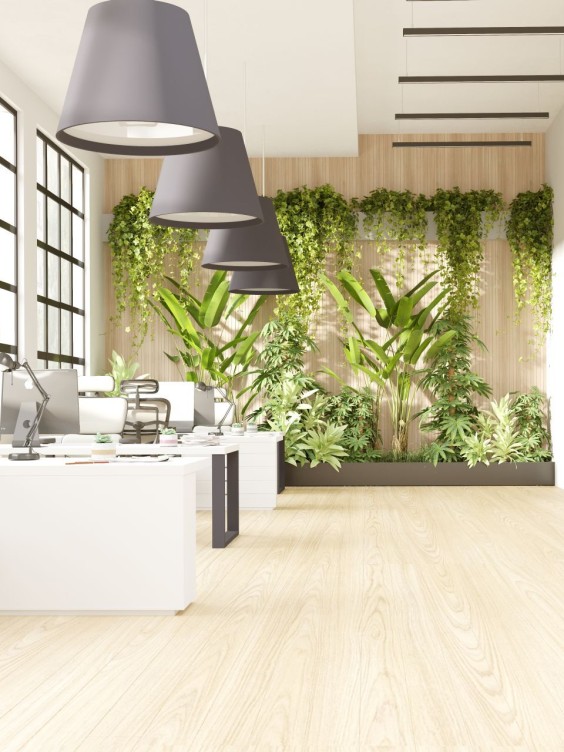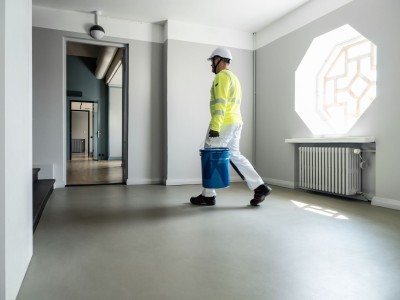You’re visiting Tikkurila website from United Kingdom. Would you like to visit the local UK site?
Segment switcher
-
-
What's new?
-
All products
-
Certified products
-
Highlighted products
Back
Segment switcher
-
-
Solutions
-
Facility solutions
-
References
-
Solutions for floors
Back
Segment switcher
-
-
Colours
-
Colour cards
-
Colour articles
Back
Segment switcher
-
-
Resources
-
Architects and designers
-
Professional painters
-
Tools
Back
Segment switcher
-
-
Contact us
-
At your service
-
Join our programs
Back
Segment switcher
-
Segment switcher
What is the M1 certification and why is it important?
Ecolabels and certifications help us choose products that are better for the environment, health and safety. Here's everything you need to know about M1.

Building materials for interior use, such as paints, can be classified according to the compounds they emit into the air. The Finnish Society of Indoor Air Quality and Climate (Sisäilmayhdistys) has published a building material classification that divides products into three classes: M1, M2 and M3.
The M1 classification sets limit values for the emission of VOC, formaldehyde and ammonia. Also the acceptability of the odour is assessed. The highest standard, M1, is for materials that emit extremely low levels of compounds into the room space, while materials belonging to the M3 class generate the highest amounts of emissions. Materials that have not been tested do not belong to any class.
The criteria for M1-certified building materials was first developed and published in 1996 and has been updated since. The M1 certificate is recognised globally and is frequently used especially in the Nordic and Baltic countries.

Benefits of using M1-certified paints
Making the best use of products fulfilling the M1 criteria has positive effects on health and safety, performance and customer satisfaction.
As customers are increasingly aware of the importance of good indoor air quality and of the factors contributing to it, M1-classification is a valuable asset in finding safe paints without having to invest considerable resources on the process. Choosing paints with M1 certification contributes to less emissions during and after the painting, thus affecting the well-being of both the customer and the professional painter using them on a regular basis. M1-certified paints often have superior properties and better overall quality, making application easier and faster and enabling professional painters to keep their work quality consistently high.
Criteria focus on emissions and odour
M1 certification is granted by the Finnish Building Information Foundation to products that have been examined by an accredited third-party testing laboratory and have undergone an organoleptic assessment (= sensory analysis to evaluate the odour). Classified materials have to fulfill the following criteria at the age of 4 weeks:
| Examined qualities | M1[mg/m²h] | M2[mg/m²h] |
| The emission of total volatile organic compounds (TVOC) | <0,2 | <0,4 |
| A minimum of 70% of the compounds shall be identified | <0,2 | <0,4 |
| The emission of formaldehyde(HCOH) | <0,05 | <0,125 |
| The emission of ammonia(NH3) | <0,03 | <0,06 |
The emission of carcinogenic compounds belonging to category 1 of the IARC monographs (IARC 1987)1* | <0,005 | <0,005 |
| Odour (dissatisfaction with odour shall be bellow 15%)²* | Is not odours | Is not significantly |
The classification method does not pose any requirements for emissions during installation. Issues related to occupational safety must be checked from the manufacturer’s instructions and material safety data sheets.1* IARC 1987, does not apply to formaldehyde (IARC 2004) 2* The result of sensory evaluation shall be > + 0,1. Source: https://www.rakennustieto.fi/index/english/emissionclassificationofbuildingmaterialsm1/M1criteriaandtheuseofclassifiedproducts.html
Low emission paints are better for health and the environment
Volatile organic compound (VOC) emissions contribute to ozone in the lower atmosphere and in large concentrations adversely affect people, animals, and plants. While ozone in the stratosphere helps protect our planet from harmful UV rays from the sun, ground-level ozone is actually hazardous and can cause smog, respiratory problems and crop loss. Low VOC content in building materials is thus key to interior air quality and the well-being of building users as well as the environment.

Related articles

How to provide added value with innovative painting
Learn five tips for adding unexpected value to your customer.
Read more
What happens to indoor air quality when I open a can of paint?
Learn the basics of how a choice of paint can have an effect to indoor air quality.
Read more
How surface treatment solutions help score green building points
Paints and coatings that offer durability, high-quality indoor air and heat-reflective properties can give you a competitive edge when designing a building to meet LEED, BREEAM, RTS, WELL or other sustainability standards.
Read moreSend
You can send to several people by separating multiple email addresses with commas.
Save a product or a color.

